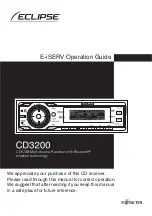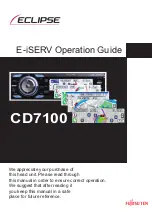
• IP Multiline Stations must register with the IP address of the VoIPDB. The IP Multiline stations
registering via a URL is not supported.
• If an internal paging group has only IP Multiline Stations, mutlicast is used for the page. IP Multiline
Terminals must have a gateway programmed to accomplish a multicast transmission. When an
actual gateway device does not exist on the network, a dummy gateway address on the same
subnet must be defined. If the paging group has any TDM stations or an external speaker, multicast
is not used and the gateway is not required.
• When using Multiple Logon, the same Personal ID index can be assigned to multiple IP Terminals
or Softphone.
• Two ports of the same terminal type (PRG 15-05-26) cannot be assigned to the same Personal ID
index (PRG 15-05-27).
• PRG 10-46-01 must be set to 1 (Auto) or 2 (Manual) for Multiple Logon to work.
• When three ports are assigned the same Personal ID index in PRG 15-05-27, if PRG 15-05-26 is
not set for those ports, the terminal types will be assigned based on order of login. If PRG 15-05-26
is set, the login order does not matter and they will assign the correct port.
• The Override feature functions the same as single login.
Restrictions
• When using IP Terminals, assigning the following features to a large number of terminals (30 or
more) is not recommended:
- The same Trunk Line assignment (squared key system)
- The same Virtual Extension assignment
- Paging key with LED ON assignment
- The same location Park key
- The same BLF key assignment
- Day Night Mode Change key assignment
- The same VM Mail Box key assignment
- Trunk Group key
- Trunk Group All Line Busy Indication
• One call cannot ring more than 8 simultaneous IP extensions at the same time if the call originates
from ring group or a virtual.
• An SIP Multiline Terminal can override another SIP Multiline Terminal or a Softphone.
• A Softphone can override another Softphone or an SIP Multiline Terminal.
• Override does not support SIP Multiline Terminal with DSS console or Softphone with DSS Console.
• The SL1100 Desktop Application does not support Network Address Translation (NAT).
Because of this, any Desktop Applications must appear to be on the same network as the SL1100
VoIP Interface (VoIPDB). For remote Desktop Applications, like SP310 Softphone, this can be
achieved by a VPN connection to the network the SL1100 resides on.
• When using Override with an active CTI connection, PRG 15-05-39 must be enabled for the
extensions that will be overridden. The overriding terminal must be of the same type and number of
line keys as the terminal to be overridden. If the types of terminals and number of keys are different
between overriding and overridden phones, the Telephony Service Providers (1st Party and 3rd
Party) may not function properly.
Default Settings
None
SL1100
ISSUE 2.0
1-428
IP Multiline Station (SIP)
I
Summary of Contents for SL1100
Page 2: ......
Page 3: ...Features and Specifications Manual A50 031169 003 NA ISSUE 2 0 ...
Page 171: ...5 Press Speaker key to hang up ISSUE 2 0 SL1100 Features and Specifications Manual 1 159 C ...
Page 218: ...2 Dial 724 SL1100 ISSUE 2 0 1 206 Dial Pad Confirmation Tone D ...
Page 741: ... Direct Inward Dialing DID ISSUE 2 0 SL1100 Features and Specifications Manual 1 729 T ...
Page 856: ...MEMO SL1100 ISSUE 2 0 2 26 Codes Tables ...
Page 862: ...MEMO SL1100 ISSUE 2 0 3 6 Features Availability by Software Revision ...
Page 863: ...MEMO ISSUE 2 0 SL1100 Features and Specifications Manual 3 7 ...
Page 864: ...Features and Specifications Manual NEC Corporation ISSUE 2 0 ...
















































